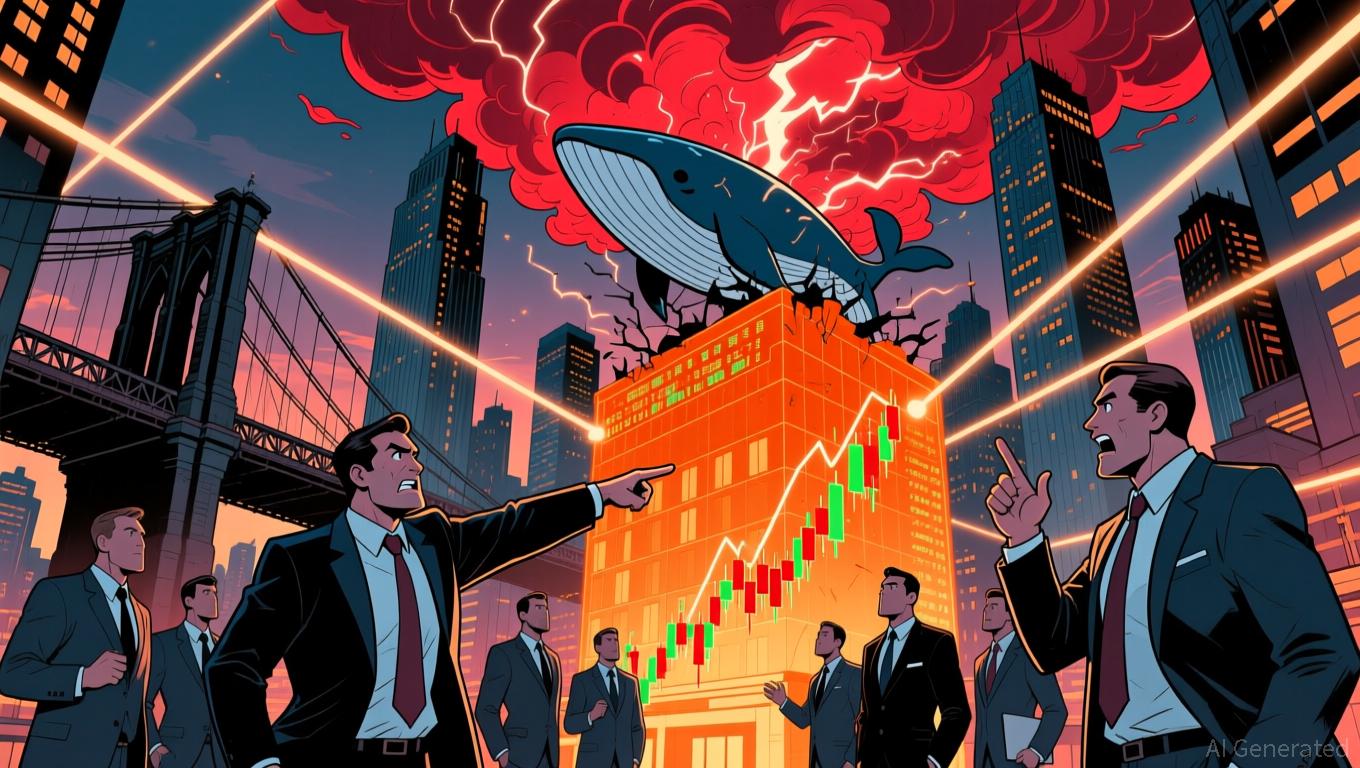Ethereum has experienced heightened price swings, drawing focus as major investors—often referred to as "whales"—continue to amass large quantities of the token despite ongoing market uncertainty. Blockchain data shows that one whale acquired $105 million in ETH in a single move, raising their cumulative purchases since November 4 to $1.33 billion.
This assertive buying spree
, according to sources such as Lookonchain and CryptoQuant, reflects increasing optimism among institutional players even as Ethereum recently slipped beneath important support thresholds.
This whale has been utilizing decentralized finance (DeFi) platforms, with about $270 million of their latest acquisitions financed through
Aave
, a leading lending platform
based on blockchain analytics
. This use of leverage highlights the expectation that Ethereum’s value will rise enough to cover both borrowing expenses and price fluctuations.
Experts point out
that, historically, whale accumulation during periods of economic uncertainty often comes before market rebounds, hinting that the current environment may signal a stabilization period.
Ethereum’s price has steadied
near $3,500 after a volatile stretch fueled by concerns over a potential U.S. government shutdown and wider economic instability. Still, the cryptocurrency remains in a month-long downward trend, with
significant resistance at $3,607
that must be surpassed to restore
upward momentum
. Failure to do so could see prices fall back toward $3,287, reviving bearish attitudes. On the other hand,
persistent whale accumulation
has absorbed available liquidity and strengthened psychological support, which may help prevent deeper declines.
Market fragility
has been intensified by outflows from Ethereum-centric ETFs, which have struggled to attract institutional capital for several weeks.
More than $38 million
was withdrawn from U.S. spot ETH funds in just one day, adding to the downward pressure.
At the same time, major holders
have accumulated 120,000 ETH during recent price drops, viewing dips below $3,300 as buying chances rather than signs of breakdown. This stands in contrast to retail traders,
who have been selling off
amid increased volatility.
Forthcoming upgrades
, such as Ethereum’s Fusaka network update scheduled for December, could serve as a fundamental trigger for recovery. The upgrade will introduce PeerDAS and Verkle Trees, designed to boost scalability and lower transaction fees.
In the past, Ethereum
has often traded below its intrinsic value ahead of major updates as short-term trading dominates sentiment. Nonetheless, analysts believe that foundational changes like Fusaka could prompt a revaluation once volatility decreases.
Technical signals present a mixed picture. Ethereum’s RSI is nearing oversold levels, the MACD remains negative, and the asset is trading below its 20, 50, and 100-day exponential moving averages.
Important support zones
around $3,250 and $3,131 may determine short-term direction, with the latter seen as a strong entry point for whales.
Opinions among traders are split regarding Ethereum’s next move.
Some experts, including MEXC’s Shawn Young
, draw comparisons between the current whale buying and previous market bottoms, noting that large wallets have absorbed selling from short-term holders.
Others warn
that if leveraged bets are forced to close, it could intensify price swings. The Age Consumed metric, which tracks long-term holder selling, has also dropped, indicating less pressure from older coins entering the market.
As
Ethereum
works through this consolidation period, the relationship between whale activity, macroeconomic trends, and technical signals will be crucial. While short-term risks remain, ongoing accumulation by sophisticated investors could set the stage for a rebound if broader market conditions improve.




